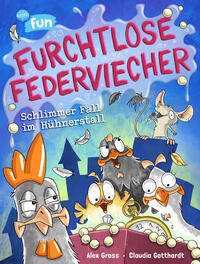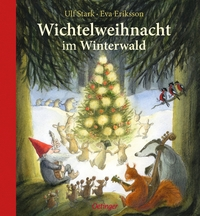Adventskalendergeschichte mit 25 Abschnitten zum Vorlesen
In "Wichtelweihnacht im Winterwald" von Ulf Stark erleben die Leserinnen eine bezaubernde Weihnachtsgeschichte, die im Großen Wald spielt. Hier fiebern alle Bewohnerinnen der Ankunft des Weihnachtsmanns entgegen. Während Mama Kaninchen fleißig backt und kocht und Opa Kaninchen Dichtkunst übt, können die Kaninchenkinder Nina und Kalle die Warterei kaum aushalten und machen sich auf die Suche nach dem Weihnachtsmann. Ihre Reise führt sie zum Hauswichtel Grantel, den sie für den Weihnachtsmann halten. Diese Geschichte, gegliedert in 25 Kapitel, ist als Adventskalenderbuch konzipiert, mit dem Ziel, die Tage bis Weihnachten mit täglichen Vorlesegeschichten zu versüßen. Die Geschichten sind reich bebildert von der renommierten Illustratorin Eva Eriksson und versprechen eine weihnachtliche Lesezeit voller Magie und Vorfreude für Kinder ab 3 Jahren.
Adventskalenderbuch: Mit 25 Kapiteln zum Vorlesen – jeweils ca. 5 Minuten pro Geschichte, perfekt, um die Adventszeit zu versüßen.
Reich bebildert: Die wunderschönen, farbigen Bilder von Eva Eriksson machen das Buch zu einem visuellen Erlebnis und wecken die Weihnachtsstimmung.
Weihnachtlicher Vorlese-Klassiker: Ein skandinavischer Vorlese-Klassiker, der Kindern auf zauberhafte Weise den Charme von Weihnachten vermittelt.
Für Kinder ab 3 Jahren: Die Geschichten sind altersgerecht konzipiert und sprechen bereits Kindergartenkinder an.
Interaktives Leseerlebnis: Die Geschichte lädt zum Mitfiebern ein und die illustrierten Seiten bieten viele Details zum Entdecken.
Familienzeit: Das Buch fördert die gemeinsame Familienzeit in der Adventszeit und schafft besinnliche Momente des Zusammenkommens.
Weihnachtliche Themen: Durch die Erzählung werden die Werte von Freundschaft, Hilfsbereitschaft und weihnachtlicher Vorfreude vermittelt.
Bereicherung für jede Buchsammlung: Eine zeitlose Geschichte, die Jahr für Jahr wieder hervorgeholt und vorgelesen werden kann.




























